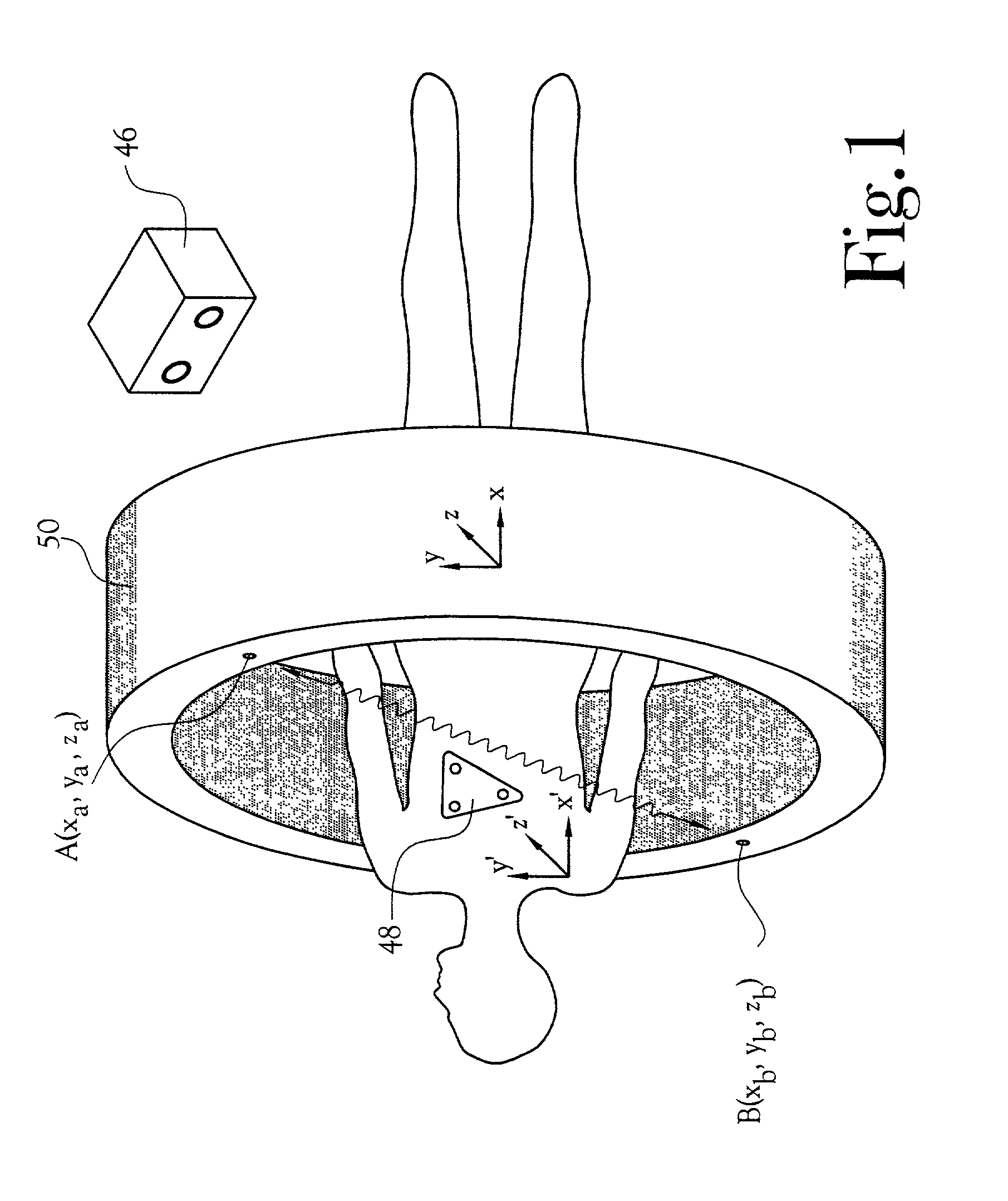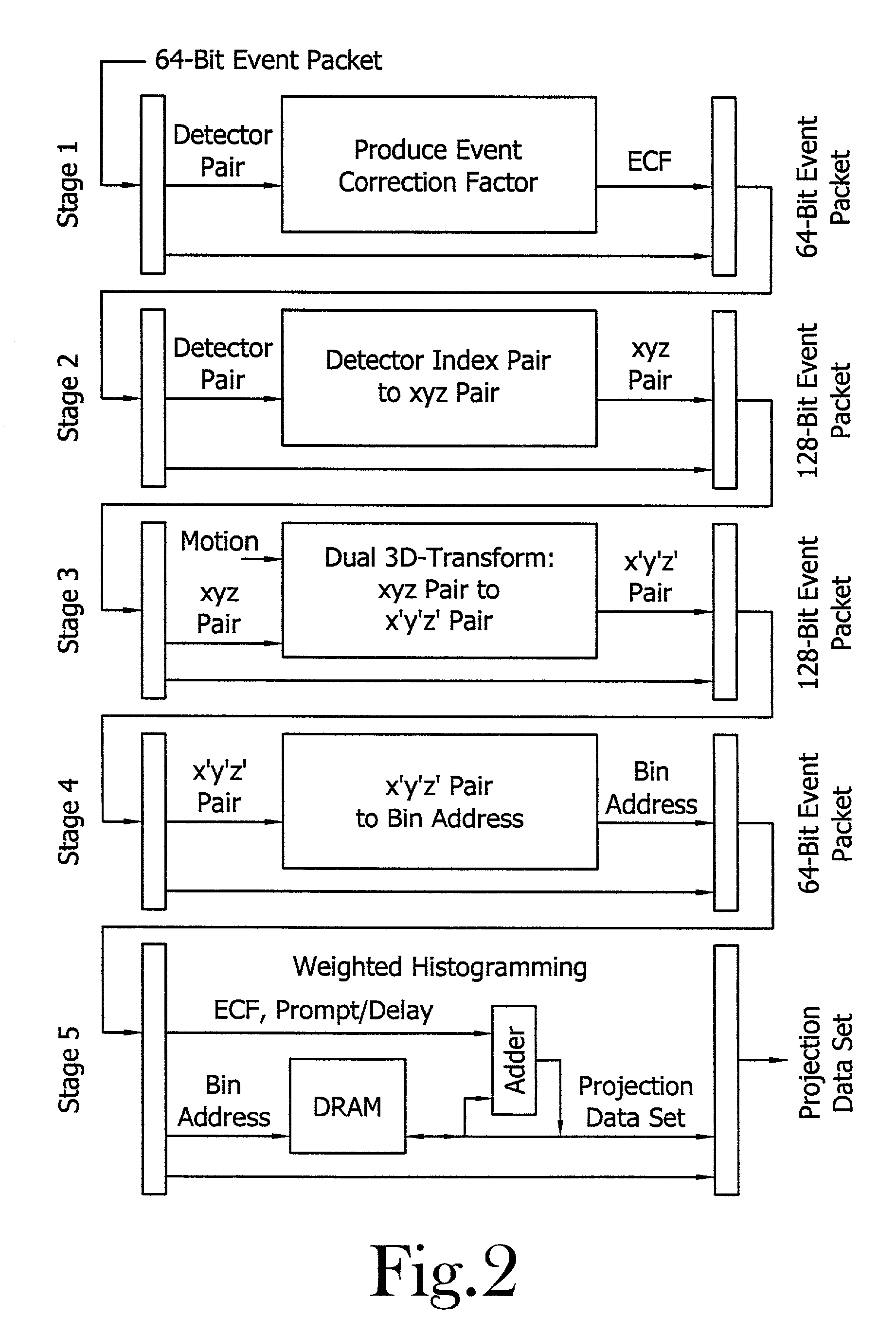On-line correction of patient motion in three-dimensional positron emission tomography
a three-dimensional positron emission tomography and patient technology, applied in tomography, instruments, applications, etc., can solve the problems of blurred pet image, time-consuming reprocessing of file data, and mode approach to motion de-blurring
- Summary
- Abstract
- Description
- Claims
- Application Information
AI Technical Summary
Benefits of technology
Problems solved by technology
Method used
Image
Examples
Embodiment Construction
[0028]A device and method for on-line correction of patient motion in three-dimensional positron emission tomography (3D PET) incorporating various features of the present invention is illustrated generally at 10 in the figures. The device for on-line correction of patient motion in 3D PET, or device 10, is designed to apply a correction for patient motion in an on-line and real-time manner. Moreover, the device 10 provides a means whereby as each PET coincidence event is detected, each line of response (LOR) is re-mapped or rebinned in real time from a stationary 3-D reference space of the PET detector array into a virtual 3-D reference space which moves dynamically with the patient.
[0029]As discussed previously, with respect to PET, the skull and brain are typically considered a single, rigid object. Accordingly, correction for subtle patient head motion is effective for typical PET operation. However, whole body PET scans also suffer from a lack of correction for motion. Accordin...
PUM
 Login to View More
Login to View More Abstract
Description
Claims
Application Information
 Login to View More
Login to View More - R&D
- Intellectual Property
- Life Sciences
- Materials
- Tech Scout
- Unparalleled Data Quality
- Higher Quality Content
- 60% Fewer Hallucinations
Browse by: Latest US Patents, China's latest patents, Technical Efficacy Thesaurus, Application Domain, Technology Topic, Popular Technical Reports.
© 2025 PatSnap. All rights reserved.Legal|Privacy policy|Modern Slavery Act Transparency Statement|Sitemap|About US| Contact US: help@patsnap.com



